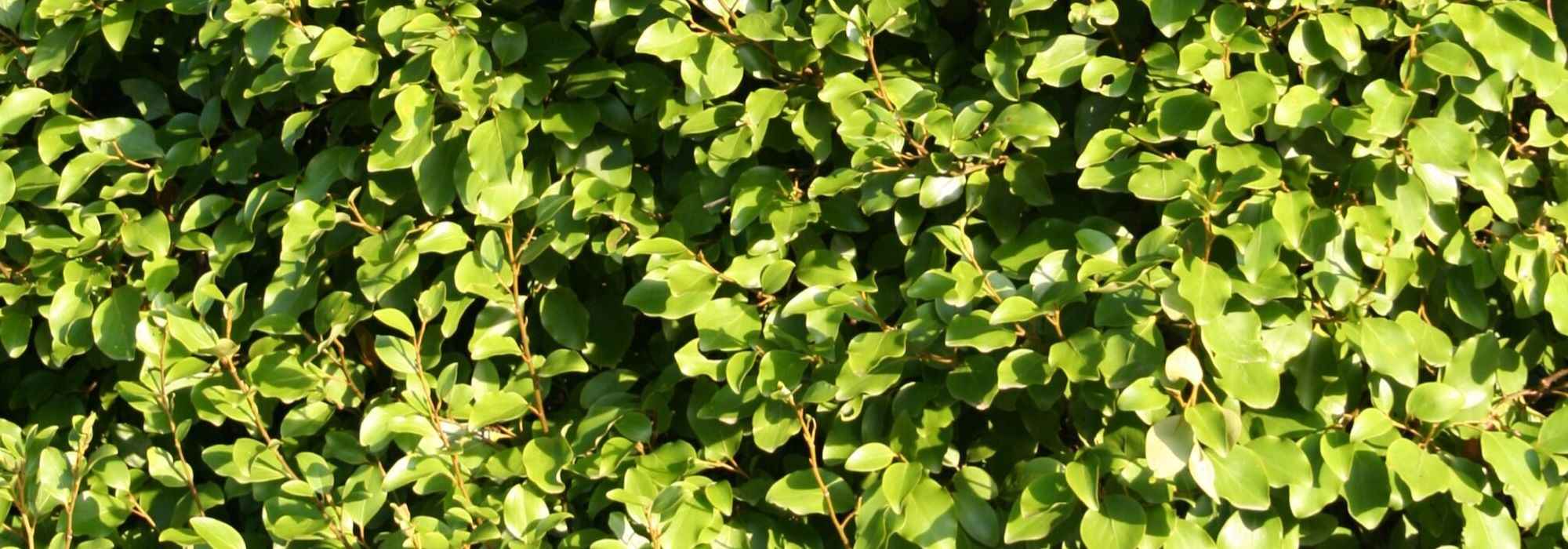
Griselinia, Griseline: planting, pruning and care
Summary
Griselinia in a nutshell
- Griselinia forms a handsome bush or small, bushy tree with evergreen foliage, bright green, almost yellow
- It is a plant of mild climate and should only be grown in the south or on the coast, ideally as an informal hedge
- It is also a bush that tolerates salt spray, making it ideal for coastal gardens
- Flowering, though inconspicuous, is highly melliferous and nectariferous
A word from our expert
Whether called Griselinia, Griseline, Griselinie or simply English fusain, Griselinia littoralis is a charming bushy bush native to New Zealand with evergreen foliage of a bright, rather light green.
Its resistance to sea spray and wind makes it an excellent choice for an informal hedge in seaside gardens. Its rapid growth is a blessing for young gardens but be careful to give it enough space, otherwise you risk having to use the pruning shear rather too often.
Unfortunately, Griselinia is not hardy throughout France and tolerates only short frosts down to -10°C. It is therefore a plant of mild climate to be grown only in the South, on the Atlantic coast or in Brittany where it has become very common.
Flowering, though inconspicuous, is very abundant in full sun and highly melliferous and nectariferous. It attracts and feeds a large number of foraging insects.
Griselinia likes light soils and sunny positions but also grows very well in pots on a terrace.
Botany and description
Botanical data sheet
- Latin name Griselinia littoralis
- Family Griseliniaceae
- Common names Griseline, coastal Griselinia, English spindle
- Flowering May, June
- Height 3 metres
- Sun exposure full sun to partial shade
- Soil type light, humus-bearing soil
- Hardiness -10°C
Griselinias originate from temperate regions of southern hemisphere, mainly Chile and New Zealand. Genus comprises around ten species but you will almost exclusively find Griselinia littoralis or coastal Griselinia in our area, and sometimes Griselina lucida, both native to New Zealand. Other common names include New Zealand Griselinia or English spindle. Formerly included in family Cornaceae, Griselinias are now placed in their own family: Griseliniaceae (since APG II). For curious gardeners or collectors, here are other Griselinia species: G. carlomunozii, G. jodinifolia, G. racemosa, G. ruscifolia, G. scandens and G. alata.
It is a bush or small tree capable of reaching 10 metres in its natural medium but rarely exceeding 3 metres here. Habit is bushy, compact and well ramified. Bark is smooth and greyish but cracks with age. Growth rate depends on variety but remains around 50 cm per year for Griselinia littoralis. Griselina lucida develops more vigorously, up to 5 metres in our regions, and foliage is somewhat darker.
Griselinia foliage is alternate and evergreen: leaves thicken and become leathery with time. The leaves are glossy and apple-green in colour, veins and petiole remaining lighter (almost yellow) than lamina. Underside of leaves is also paler and more matte. Each leaf measures between 4 and 12 cm and is ovate and incurved. Note that there are cultivars with foliage variegated with white or yellow, as well as cultivars with a more emerald green foliage.
Bush is dioecious, which means there are male and female plants. Flowering is inconspicuous to our eyes but attracts and feeds many pollinating insects. Flowers appear between May and June and are arranged in axillary panicles of hundreds of tiny greenish, apetalous flowers (a few millimetres), with 5 stamens and 3 styles, protected by a calyx of 5 sepals (on female plants).
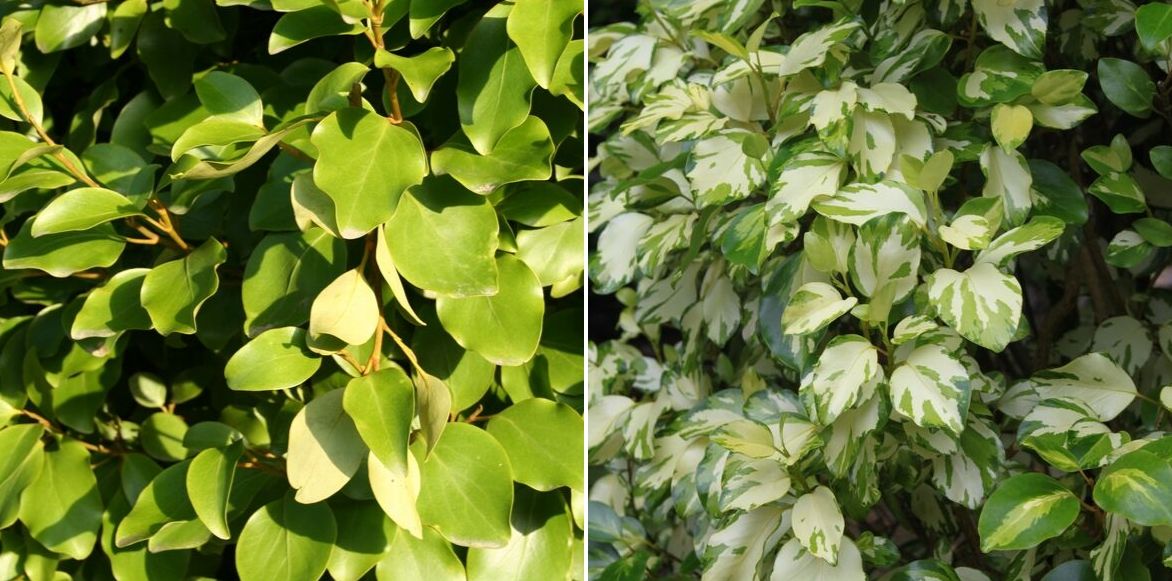
Griselinia littoralis with bright apple-green foliage and Griselinia littoralis ‘Bantry Bay’ with superb cream-variegated foliage
After fertilization, and only on female plants, fruit develops in small clusters of berries, green at first then black at ripeness, each containing a single seed.
You may also read
10 perfect bushes for a seaside gardenMain varieties
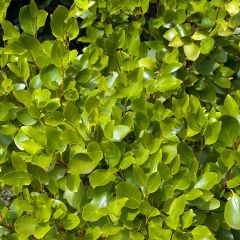
New Zealand broadleaf - Griselinia littoralis
- Flowering time june, july
- Height at maturity 2,50 m
Griselinia littoralis Redge
- Flowering time june, july
- Height at maturity 1,80 m
Discover other Griselinia
View All →Available in 1 sizes
Available in 1 sizes
Available in 2 sizes
Available in 1 sizes
Available in 1 sizes
Available in 1 sizes
Planting Griselinia
Where to plant your Griselinia?
Although moderately hardy, Griselinia performs particularly well in southern France and along coastlines thanks to its tolerance to sea spray. This is unsurprising since in its native range it grows along coasts.
This handsome bush adapts to different soils but prefers sandy soils. Neutral soil suits it perfectly and most varieties tolerate calcareous soil very well (‘Pointe du Raz’ prefers slightly acidic soil). And of course, plant your Griselinia in well-drained soil: it would not tolerate roots being “in water” in winter, which would be fatal.
It is usually placed in full sun to encourage good flowering and enhance glossy appearance of foliage. But it can just as well be planted in partial shade. It will grow well there but flower a little less.
It tolerates wind and sea spray particularly well, making it an ideal choice for hedges in seaside gardens.
When to plant?
Like all evergreen bushes, Griselinia benefits from being planted in early autumn, from September to October. If you missed that window, no problem — planting between April and June will also be fine. Moreover, since the bush is grown in a container, you can theoretically plant it any time outside heatwaves or frosts: but remember to monitor watering!
How to plant?
- Begin by soaking your Griselinia’s pot for a few minutes in a bucket of lukewarm water
- Dig a hole two to three times the volume of the rootball
- If your soil is neither sandy nor particularly well-drained, mix excavated soil with some gravel and a little potting compost. This will improve drainage.
- At bottom of hole, add a few handfuls of well-rotted manure or mature compost to give roots a good start
- Remove plant from pot and gently tease apart rootball to free roots
- Place bush in centre of hole and begin backfilling with your soil + gravel + potting compost mix
- Keep plant’s collar above soil and firm soil with fingers
- Water well at base to reduce air pockets between roots and soil
- Mulch is recommended, especially for first few years.
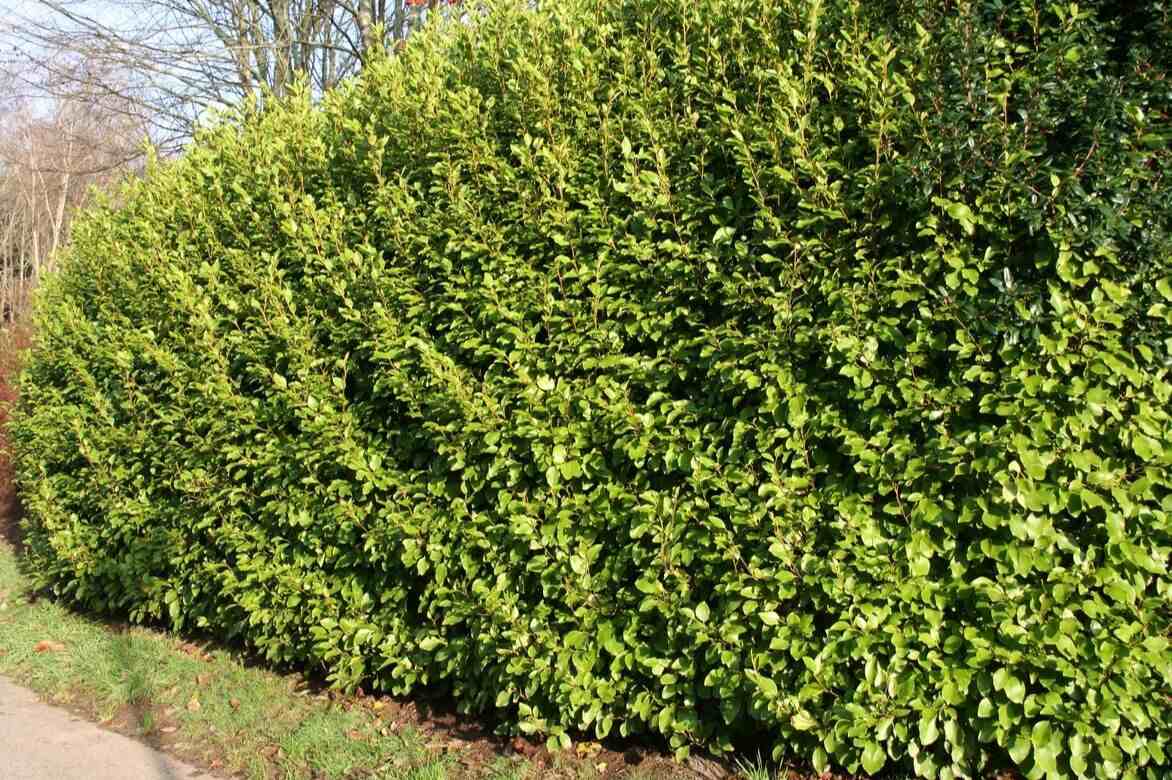
Griselinia hedge
You may also read
Coastal garden designCare and maintenance
Care
In open ground, do not hesitate to water during the year following planting if the season is dry. Mulching at the base helps keep the soil cool for longer.
Container growing is a little more delicate: ensure the substrate never dries out and, above all, protect your bush with a winter fleece if temperature falls below -5°C and if it is exposed to winds. Indeed, the bush is more sensitive in a container than in open ground.
Pruning
Prune only after flowering, insects will thank you! So, in practice, prune only in July or September. If you do not wish to prune often (or at all!), you can opt for varieties with reduced development.
Pruning is simple: just shorten stems that seem to be escaping the bush to keep branches compact. If, on the contrary, you prefer slightly free, wild hedges, do nothing!
Possible diseases and pests
No “pest” will attack your Griselinia. However, soil moisture, especially in winter, will be fatal. It can also cause fungal diseases: foliage becomes covered with blackish or orange spots and eventually falls. The bush sees its vigour greatly reduced. If this happens, there are only two solutions: either move it to a spot that suits it better, or improve drainage there by mixing surrounding soil with sand and gravel.
Propagation: propagate Griselinia
When to take cuttings?
During late-summer pruning: late August–early September, take shoots about 20 cm long of semi-ripe terminal growth (not yet lignified).
How to propagate Griselinia?
- Remove all leaves except two terminal leaves. This operation is necessary for cuttings in general as it limits water loss through evaporation.
- Trim shoots on a slant at the base just below a bud (or eye) with a clean, disinfected cutting tool (flame or 90° alcohol). Cutting like this provides a larger contact area between stem and substrate.
- Prepare a very light substrate: 1/3 multi-purpose compost and 2/3 sand
- Fill pots or, better, a propagator tray (with tall dome if possible)
- Dip ends of cuttings in plant hormone for cuttings if available. A few slices of willow soaked for a few hours in water can replace plant hormone for cuttings: either dip cuttings in willow water or water with it.
- Push cuttings into substrate up to last leaves.
- Moisten compost then cover with a plastic bag, half a plastic bottle or propagator dome to keep cuttings in a warm, humid, enclosed environment. Tip: cuttings root better and faster when placed near edge of pot or tray.
- Place cuttings in partial shade (but still bright) and definitely not in sun. In a few minutes cuttings could be scorched.
- Don’t touch anything for a week. You can check occasionally but best to keep everything closed (you can see through dome or plastic bag anyway).
- Sometimes cuttings lose their leaves. No need to worry as long as shoots are not black.
- Protect cuttings from frost in winter then transplant into garden from following April.
→ Learn more in our tutorial : How to propagate Griselinia?
Companion planting in the garden
In an informal hedge in a seaside garden
Griselinia littoralis is perfectly at home in an informal hedge in a coastal garden. Accompanying it, the charming hybrid Grevillea juniperina ‘Canberra Gem’, with a bushy habit and an almost endless pink-red flowering. Erythrina x bidwillii, with its unusual name, is a spectacular bush producing huge clusters of bright red flowers and will complement the hedge, as will a “single” Callistemon citrinus ‘Burgundy’, a bottlebrush with deep burgundy-red brushes. Add to that a lovely Escallonia laevis ‘Gold Ellen’ with golden evergreen foliage and vivid pink flowering and, why not, a small Ceanothus pallidus ‘Marie Simon’ whose gentle flowering will temper the ardour of the brighter flower displays of the previous bushes. This charming hedge will be in flower for much of the year. It will also withstand sea spray and wind while sheltering you within your garden. Note that most of the bushes mentioned have evergreen foliage that will brighten the garden all year round.

An example of a planting combination in a seaside hedge: Griselinia littoralis, Grevillea juniperina ‘Canberra Gem’, Erythrina x bidwillii, Callistemon laevis (or C. citrinus ‘Burgundy’), Escallonia laevis ‘Gold Ellen’
In pots on a terrace
Griselinia littoralis ‘Redge’ is a more compact variety than the type species and therefore particularly suited to pot culture. Under two metres tall and about one metre wide, its vigour can be tempered with a few well-placed pruning shears. But rest assured, it grows more slowly than the type species: around 30 cm per year. To accompany it, the striking Melaleuca gibbosa or Niaouli with an extremely long mauve flowering, sometimes year-round if the climate is mild enough. It is a bush that does well in a pot and copes very well with drought. Eucalyptus gunnii ‘France Bleue Rengun’ is a French newcomer. This Eucalyptus, with very fine blue-tinged foliage and a gentle aroma, carried on a very architectural columnar silhouette, is a true plant jewel on your terrace. Despite reaching two metres at maturity, this small tree grows very well in a large pot. A few Agapanthus ‘Blue Storm’ with blue flowering will complete the picture, as will a fine Agave americana whose bluish tones will echo the foliage of the Eucalyptus. Grasses are unmatched for lightening a composition thanks to their spikes dancing in the wind. A few clumps of Pennisetum setaceum ‘Rupellianum’ will work wonders in this role alongside your Griselinia.
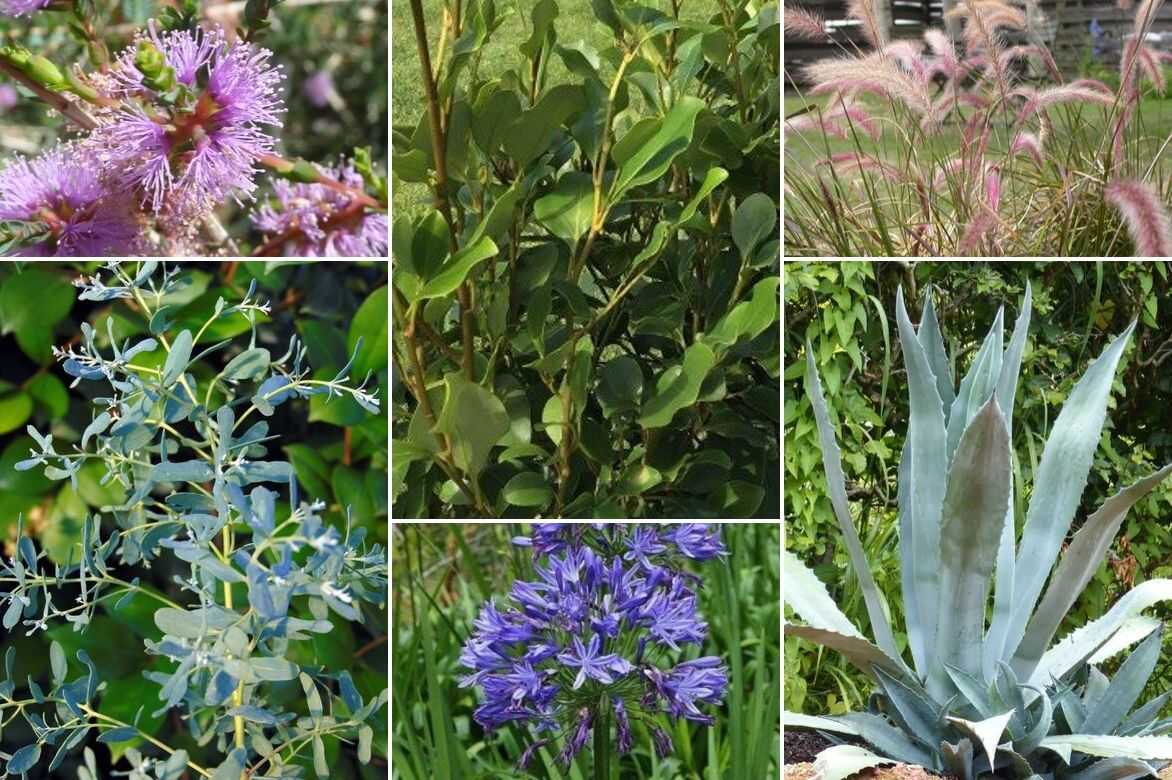
An example of a planting combination in pots: Melaleuca gibbosa, Eucalyptus gunnii ‘France Bleu Rengun’, Griselinia littoralis ‘Redge’, Agapanthus ‘Blue Storm’, Pennisetum setaceum ‘Rupellianum’ and Agave americana
Did you know?
- Griselinia is native to New Zealand. Like many plants imported from that country, it naturalised quickly near the seashore, notably on the Atlantic midrib.
- Its name honours the Italian naturalist of the 18th century, Francesco Griselini
Useful resources
- Find all our Griselinias in our online nursery.
- Discover our care guide “Griselinia: How to create a hedge and maintain it?“
Frequent questions
-
Can I grow Griselinia in the north?
It's risky, we won't hide it from you. But it's possible. Griselinia can withstand punctate frosts down to -10°C. If protected from cold wind in well-drained soil and facing south, near a wall for example, you can keep your Griselinia for a few years. You can also grow it in a large pot to move into a frost-free shelter if the cold seems too severe in winter.
- Subscribe!
- Contents
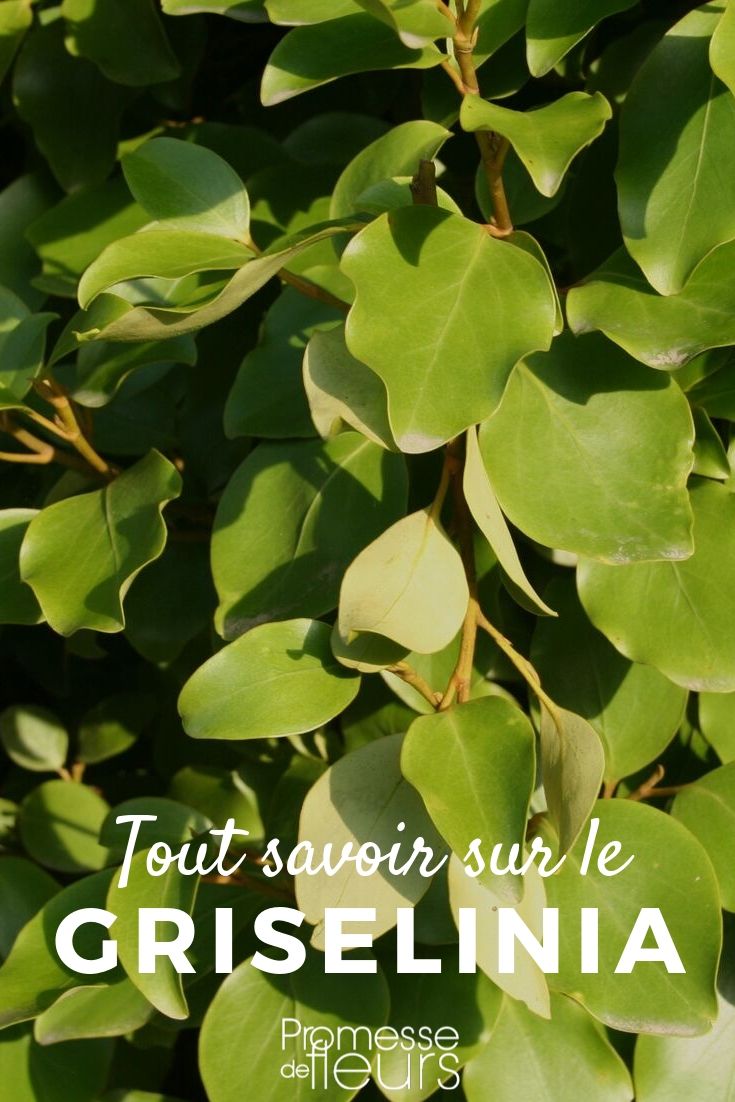































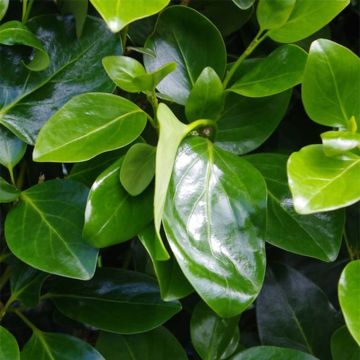
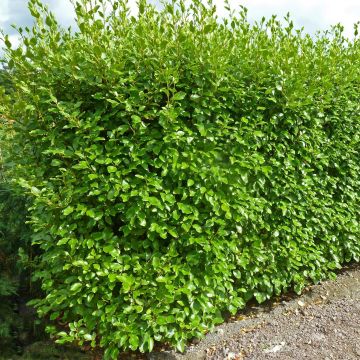





Feedbacks